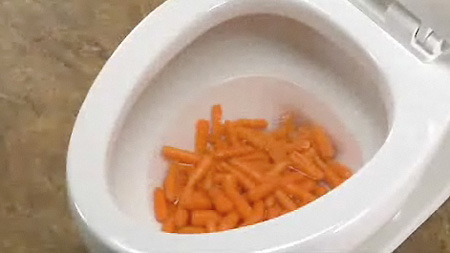Can One to Dispose of Food in the Toilet?
Can One to Dispose of Food in the Toilet?
Blog Article
In this article below you can get some really good help and advice in relation to Flushing Food Down the Toilet?.

Intro
Many people are commonly faced with the problem of what to do with food waste, particularly when it pertains to leftovers or scraps. One common inquiry that arises is whether it's all right to flush food down the commode. In this write-up, we'll explore the reasons why people could think about flushing food, the effects of doing so, and alternate approaches for proper disposal.
Reasons that people could consider flushing food
Lack of understanding
Some individuals may not know the possible harm triggered by flushing food down the bathroom. They may incorrectly believe that it's a harmless technique.
Convenience
Purging food down the bathroom might seem like a fast and simple service to getting rid of unwanted scraps, specifically when there's no close-by trash bin readily available.
Negligence
In some cases, people may just select to flush food out of large laziness, without thinking about the effects of their actions.
Consequences of flushing food down the bathroom
Ecological effect
Food waste that ends up in rivers can contribute to contamination and damage water ecological communities. In addition, the water made use of to purge food can stress water sources.
Pipes issues
Purging food can cause clogged up pipelines and drains pipes, creating pricey plumbing repair work and troubles.
Types of food that ought to not be flushed
Coarse foods
Foods with fibrous structures such as celery or corn husks can get tangled in pipes and trigger blockages.
Starchy foods
Starchy foods like pasta and rice can soak up water and swell, leading to clogs in pipes.
Oils and fats
Greasy foods like bacon or food preparation oils ought to never ever be flushed down the bathroom as they can strengthen and create obstructions.
Correct disposal methods for food waste
Utilizing a waste disposal unit
For homes furnished with waste disposal unit, food scraps can be ground up and purged via the pipes system. Nonetheless, not all foods appropriate for disposal in this fashion.
Recycling
Certain food product packaging products can be recycled, minimizing waste and decreasing environmental effect.
Composting
Composting is an environmentally friendly way to dispose of food waste. Organic materials can be composted and used to improve dirt for horticulture.
The value of appropriate waste monitoring
Lowering environmental injury
Correct waste monitoring techniques, such as composting and recycling, assistance decrease pollution and maintain natural resources for future generations.
Protecting pipes systems
By staying clear of the method of flushing food down the commode, property owners can prevent costly pipes repairs and keep the integrity of their plumbing systems.
Final thought
To conclude, while it might be appealing to purge food down the bathroom for comfort, it is very important to recognize the possible effects of this activity. By embracing correct waste monitoring practices and taking care of food waste sensibly, individuals can add to much healthier plumbing systems and a cleaner environment for all.
FLUSH FOOD DOWN THE TOILET?
FLUSHING FOOD CAN CAUSE BLOCKED DRAINS IN YOUR HOME
All of the plumbing fixtures in your home are connected to the same sewer pipe outside of your home. This outdoor sewer pipe is responsible for transporting all the wastewater from your home to the Council sewer mains. Even small pieces of food that go down the kitchen sink can cause problems for your sewer. It should therefore be obvious that flushing larger bits of food, such as meat, risks a clog in either the toilet itself or the sewer pipes. Flushing greasy food is even more problematic because oil coagulates when it cools, coating the interior lining of your pipes.
THE TOILET IS NOT A BIN
Food isn’t the only thing that people shouldn’t be flushing down the toilet. People use the toilet to dispose of all kinds of things such as tampons, makeup wipes, dental floss, kitty litter and even underwear. Water goes to great lengths to educate residents about the high costs and stress placed on wastewater treatment systems simply from people flushing the wrong stuff down the toilet. It costs taxpayers millions of dollars each year, and homeowners thousands in blocked drain repairs.
FLUSHING FOOD IS A WASTE OF WATER
Flushing food is a waste of our most precious resource - water. In June this year Level 1 water restrictions were introduced to protect water supply from drought conditions. Much of New South Wales continues to be affected by prolonged drought with recent figures revealing up to 97 per cent of the state remains in drought. Depending on whether you have a single or dual flush toilet, every single flush uses between five and 11 litres of water. In the current climate this is a huge amount of water to be wasting on flushing food that should be placed in the bin (or better yet, the compost).
https://www.jabplumbingsolutions.com.au/blog/can-you-flush-food-down-the-toilet

As a passionate reader about Flushing Food Down the Toilet?, I was thinking sharing that short article was worthwhile. Enjoyed our review? Please share it. Let others discover it. Thank you for your time spent reading it.
Schedule Service Now Report this page